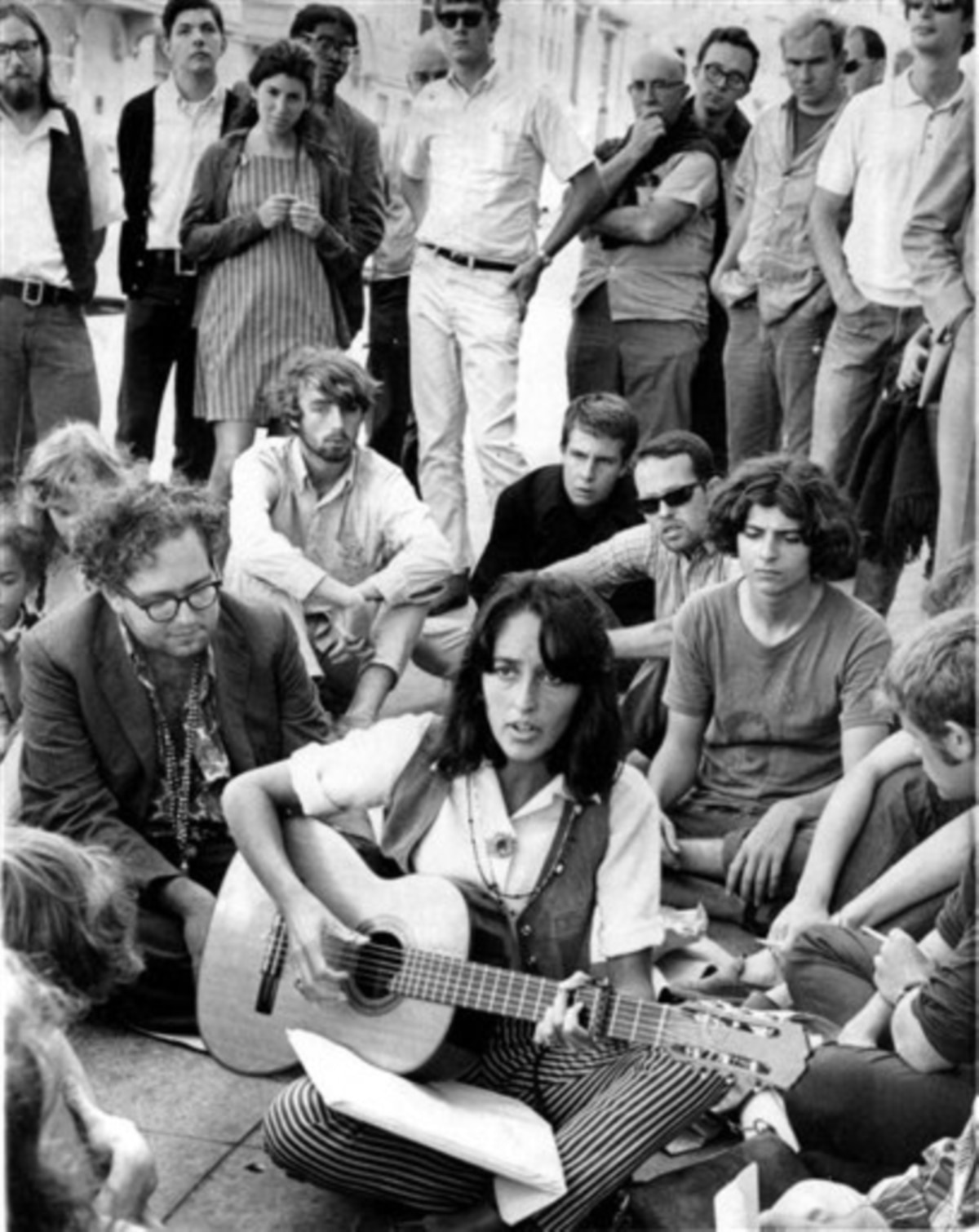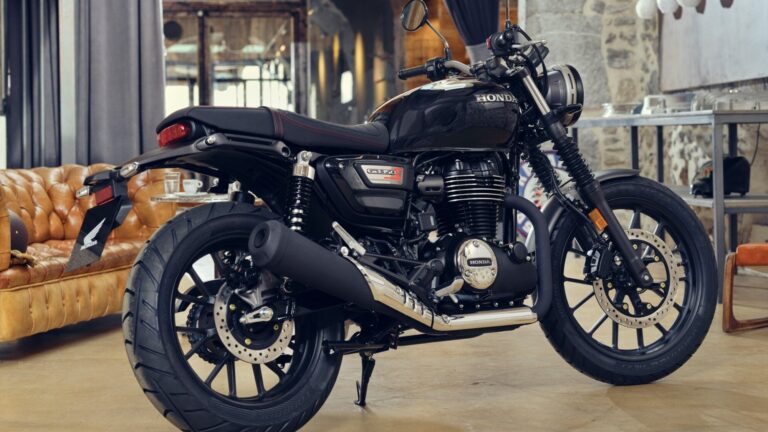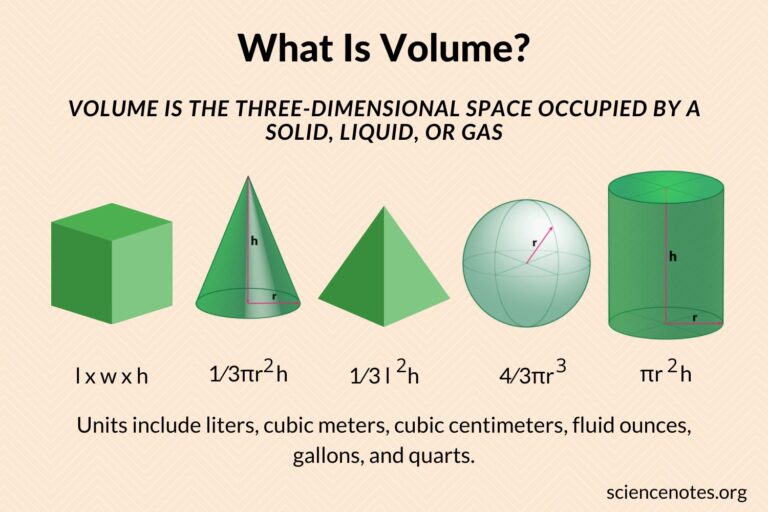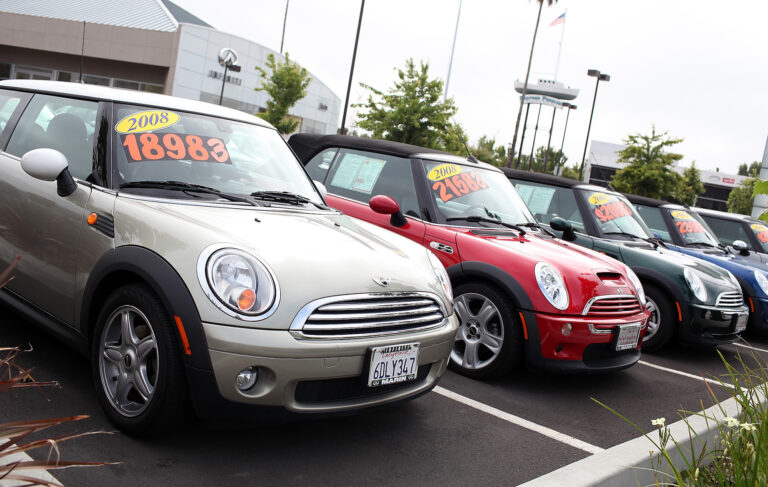1960s Trucks For Sale Near Me: Your Ultimate Guide to Finding a Classic Workhorse
1960s Trucks For Sale Near Me: Your Ultimate Guide to Finding a Classic Workhorse cars.truckstrend.com
The rumble of a big V8, the unmistakable lines of a bygone era, the sheer utility blended with timeless style – there’s something undeniably captivating about 1960s trucks. More than just vehicles, these machines are rolling pieces of history, embodying an era of rugged individualism, simpler mechanics, and iconic design. For many enthusiasts and collectors, the dream isn’t just to own one, but to find that perfect classic workhorse "near me," a local gem that promises adventure without the hassle of cross-country shipping or blind online purchases.
This comprehensive guide is crafted for anyone embarking on the exciting journey of acquiring a 1960s truck. We’ll explore why these trucks remain so popular, what to look for, where to find them in your vicinity, the crucial inspection process, negotiation tips, and what to expect once you bring your vintage pride and joy home. Our aim is to provide practical, actionable insights, making your quest for a classic 1960s truck a rewarding experience.
1960s Trucks For Sale Near Me: Your Ultimate Guide to Finding a Classic Workhorse
The Enduring Appeal of 1960s Trucks
Why do these half-century-old vehicles continue to command such a loyal following? The reasons are as varied as the trucks themselves:
- Iconic Design: The 1960s ushered in some of the most memorable truck designs. From the sleek, unibody Ford F-100s and the "Sweptline" Dodge D-Series to the revolutionary "C-Line" Chevrolet and GMC trucks with their independent front suspension, these vehicles boasted clean lines, chrome accents, and a sense of purpose that modern trucks often lack. They evoke a strong sense of nostalgia and Americana.
- Built to Last: While not without their flaws (hello, rust!), these trucks were generally over-engineered. Simple mechanicals meant they were durable and, crucially, relatively easy to repair for the average shade-tree mechanic. Components were often robust, designed for heavy-duty use.
- Mechanical Simplicity: Unlike today’s computer-laden vehicles, 1960s trucks rely on straightforward carburetors, distributors, and mechanical linkages. This simplicity appeals to those who enjoy working on their own vehicles or prefer the reliability of less complex systems.
- Versatility: Whether you envision a show-stopping restomod, a reliable farm truck, a weekend cruiser, or a daily driver (with some upgrades), 1960s trucks offer incredible versatility. Their large beds and robust frames make them genuinely practical for hauling and utility tasks.
- Cultural Significance: These trucks were the backbone of America’s working class, serving farms, construction sites, and families across the nation. Owning one connects you to a rich cultural heritage.

Prominent models include the Chevrolet C/K series (especially the C10 and C20), Ford F-Series (F-100, F-250), Dodge D-Series, and the unique offerings from International Harvester (e.g., the Scout and pickup lines). Each brand offered distinct styling cues and engineering philosophies, contributing to the rich tapestry of 1960s truck culture.
Key Considerations Before You Buy
Before diving headfirst into the search, a little introspection and planning will save you headaches and money down the road.
- Define Your Purpose:
- Daily Driver: Expect to invest significantly in upgrades for reliability, safety (brakes, seatbelts), and comfort (power steering, A/C).
- Weekend Cruiser/Show Truck: Focus on aesthetics, engine performance, and potentially custom features.
- Work Truck/Hauler: Prioritize mechanical soundness, frame integrity, and bed condition.
- Restoration Project: Be realistic about the time, money, and skills required. The cheaper the truck, the more expensive the restoration often becomes.
- Set a Realistic Budget: This isn’t just the purchase price. Factor in:
- Initial Purchase: From a few thousand for a rusty project to $50,000+ for a fully restored or custom build.
- Transportation: If not truly "near me," how will you get it home?
- Immediate Repairs/Maintenance: Brakes, tires, fluids, tune-up.
- Restoration/Upgrade Costs: This can easily dwarf the purchase price.
- Insurance: Classic car insurance is typically affordable but necessary.
- Ongoing Maintenance: Even a well-maintained classic will require attention.
- Assess Your Mechanical Aptitude (or Your Mechanic’s): Are you comfortable with wrenches, or will you rely on a professional? Finding a mechanic experienced with vintage vehicles is crucial.
- Storage: Do you have a secure, dry place to store your truck? Protection from the elements is vital for preserving a classic.
Where to Look: Finding 1960s Trucks "Near Me"
The "Near Me" aspect is key for many buyers, offering the convenience of in-person inspection and avoiding shipping costs. Here’s where to focus your search:
- Online Marketplaces with Local Filters:
- Craigslist: A treasure trove of local listings. Use specific keywords like "1960s Ford Truck," "Chevy C10," etc., and filter by location. Be wary of scams, but many genuine sellers list here.
- Facebook Marketplace: Similar to Craigslist but often more visually appealing listings. Join local classic car groups on Facebook, as members often post trucks for sale.
- eBay Motors: While national, you can filter by distance from your zip code for local pickup options.
- Specialty Classic Car Websites: Hemmings.com, ClassicCars.com, Autotrader Classics. These often have dedicated sections for trucks and allow geographical filtering, though prices tend to be higher.
- Local Car Shows and Swap Meets: Attend events in your area. This is a fantastic way to see trucks in person, talk to owners, and network. Many deals are made through word-of-mouth at these gatherings.
- Local Classic Car Dealerships/Restoration Shops: Many shops specialize in vintage vehicles and might have trucks for sale, often already restored or in good driver condition. Prices will reflect their expertise and overhead.
- Auction Houses: While large auctions like Barrett-Jackson are national events, smaller, local auction houses or estate sales sometimes feature classic trucks. Check their listings online.
- Word of Mouth: Tell everyone you know you’re looking! You’d be surprised how often a friend of a friend has an old truck sitting in a barn or garage. Visit local auto parts stores, independent garages, and even community bulletin boards.
The Inspection Process: What to Look For (Hands-On Guide)
This is the most critical step. Never buy a classic truck unseen, especially one "near me" that you can physically inspect.
- Bring a Checklist and Tools: Flashlight, magnet (for bondo), a mirror for hard-to-see areas, a notepad, and a camera.
- Exterior Examination:
- Rust, Rust, Rust: This is the biggest enemy. Check fenders, rocker panels, cab corners, door bottoms, bed floor, bed sides, and especially the frame rails. Look for bubbling paint, patches, or soft spots. Use your magnet to detect thick bondo over rust.
- Body Panels: Are they straight? Do doors, hood, and tailgate align properly? Check for signs of accident damage or poor repair.
- Paint: Is it a fresh paint job covering problems, or an honest patina?
- Glass and Trim: Are windows cracked? Do they roll up and down? Is the chrome trim complete and in good condition?
- Interior Inspection:
- Seating: Rips, tears, springs, overall comfort.
- Dashboard: Cracks, missing gauges, functionality of existing gauges.
- Electrical: Test all lights (headlights, taillights, turn signals, brake lights), wipers, horn, radio (if present), heater fan.
- Floor Pans: Lift floor mats to check for rust, especially near the firewall and under the pedals.
- Under the Hood:
- Engine: Look for oil leaks, coolant leaks, signs of overheating. Check fluid levels. Are wires frayed? Hoses cracked?
- Battery: Condition, age, corrosion.
- Listen: Have the seller start it cold. Listen for knocking, ticking, or excessive smoke from the exhaust.
- Underneath the Truck:
- Frame: Absolutely critical. Look for cracks, welds, bends, or severe rust. The frame is the foundation.
- Suspension: Worn bushings, leaky shocks, broken springs.
- Exhaust System: Rust, leaks, missing components.
- Brake Lines: Check for rust, leaks, or damage.
- Differential/Transmission: Look for leaks.
- Test Drive:
- Engine Performance: Does it accelerate smoothly? Any hesitation?
- Transmission: Does it shift smoothly (manual or automatic)? Any grinding or slipping?
- Brakes: Do they stop the truck effectively and straight? Any pulling or spongy pedal? (Remember, these are often drum brakes, so expect longer stopping distances than modern vehicles).
- Steering: Excessive play in the steering wheel? Does it track straight?
- Suspension: Any clunks, squeaks, or excessive bounciness over bumps?
- Listen for Unusual Noises: Whining, grinding, clunking.
- Documentation:
- Does the VIN on the title match the truck? Is it clean and transferable?
- Service Records: Any history of maintenance or repairs?
- Ownership History: How many owners?
- Professional Pre-Purchase Inspection (PPI): If you’re serious about a truck, invest in a PPI by a reputable classic car mechanic. They can identify issues you might miss.
Negotiation and Purchase Tips
- Do Your Homework: Research similar trucks’ values online (eBay "sold" listings, classic car sites).
- Be Prepared to Walk Away: This is your strongest negotiating tool.
- Point Out Flaws: Use any issues you found during inspection to justify a lower offer.
- Cash is King: A cash offer can often secure a better deal.
- "As-Is" Sale: Understand that most classic sales are "as-is, where-is." There’s typically no warranty.
- Paperwork: Ensure the title is properly signed, and you get a bill of sale. Check your state’s DMV requirements for classic vehicle registration.
Common Challenges and Solutions
Owning a 1960s truck is rewarding, but it comes with its own set of challenges:
- Rust:
- Challenge: The most prevalent issue. Can compromise structural integrity and be expensive to repair.
- Solution: Thorough inspection. For minor surface rust, conversion and painting can help. For structural rust, professional welding and panel replacement are necessary. Prevention is key once you own it (dry storage, rustproofing).
- Parts Sourcing:
- Challenge: While popular models have good parts availability, some specific trim pieces or obscure mechanical parts can be hard to find.
- Solution: Online retailers (LMC Truck, Classic Industries, Dennis Carpenter), specialized classic parts dealers, swap meets, and online forums/groups are excellent resources.
- Mechanical Issues:
- Challenge: Old engines and transmissions will eventually need work. Carburetor issues, electrical gremlins, and worn suspension components are common.
- Solution: Learn basic maintenance yourself, or find a trusted mechanic specializing in vintage vehicles. Consider upgrades like electronic ignition, fuel injection conversion, or disc brake conversions for reliability and safety.
- Insurance:
- Challenge: Standard auto insurance might not cover a classic appropriately.
- Solution: Opt for specialized classic car insurance (e.g., Hagerty, Grundy). They understand the value of these vehicles and offer agreed-value policies.
- Storage and Security:
- Challenge: Protecting your investment from weather and theft.
- Solution: Garage storage is ideal. If not possible, a good quality car cover. Implement security measures like kill switches, steering wheel locks, or GPS trackers.
Price Table: 1960s Trucks (General Ranges)
Please note: Prices are highly variable based on specific year, model, engine, transmission, trim level, originality, modifications, and the current market. These are general ranges for typical conditions in the US. "Near me" prices will fluctuate based on local demand and supply.
| Model/Type (Example) | Condition Category | Price Range (USD) | Key Factors Affecting Price & Condition Notes |
|---|---|---|---|
| Chevrolet C10/C20 | Project/Parts Truck | $3,000 – $8,000 | Non-running, significant rust, missing components, major mechanical overhaul needed. |
| Driver Quality | $10,000 – $30,000 | Running, drivable, safe, but may have cosmetic flaws, minor rust, or need some work. | |
| Restored/Show Quality | $35,000 – $100,000+ | High-quality restoration, excellent paint, solid mechanics, custom builds. | |
| Ford F-100/F-250 | Project/Parts Truck | $2,500 – $7,000 | Extensive bodywork, engine issues, often requires full ground-up restoration. |
| Driver Quality | $9,000 – $28,000 | Reliable runner, decent paint, functional interior, minor repairs needed. | |
| Restored/Show Quality | $32,000 – $90,000+ | Concours condition, high-performance upgrades, rare options. | |
| Dodge D-Series (D100/D200) | Project/Parts Truck | $2,000 – $6,000 | Less common, parts might be harder to source, often neglected. |
| Driver Quality | $8,000 – $25,000 | Functional, solid chassis, basic interior, unique appeal. | |
| Restored/Show Quality | $30,000 – $75,000+ | Rare to find in top condition, can be a standout at shows. | |
| International Harvester Pickup | Project/Parts Truck | $1,500 – $5,000 | Very specific parts, often require full restoration by an enthusiast. |
| Driver Quality | $7,000 – $20,000 | Running, unique, not for everyone but has a cult following. | |
| Restored/Show Quality | $25,000 – $60,000+ | Niche market, but highly prized by IH enthusiasts. |
Always verify condition, inspect thoroughly, and consider a professional appraisal before purchasing.
Frequently Asked Questions (FAQ)
Q: What are the most popular 1960s trucks to buy?
A: The Chevrolet C10/C20 series (especially 1967-1972, though 1960-1966 are also very popular) and the Ford F-Series (F-100/F-150, particularly the 1967-1972 "bumpside" and earlier "slick-side" models) are consistently the most sought-after due to their iconic design, parts availability, and customization potential. Dodge D-Series and International Harvester trucks also have dedicated followings.
Q: How much does it cost to restore a 1960s truck?
A: Restoration costs vary wildly. A full, frame-off, show-quality restoration can easily exceed $50,000, sometimes reaching $100,000+. A more practical "driver quality" restoration, focusing on mechanical soundness and presentable aesthetics, might range from $10,000 to $30,000, depending on the starting condition and how much work you do yourself.
Q: Are parts hard to find for 1960s trucks?
A: For popular models like the Chevy C10 and Ford F-Series, parts availability is excellent, with numerous aftermarket manufacturers reproducing everything from body panels to interior trim. Parts for less common models like Dodge D-Series or International Harvester can be more challenging to find, often requiring specialized suppliers, used parts, or fabrication.
Q: Can I use a 1960s truck as a daily driver?
A: Yes, many people do, but it usually requires significant upgrades. Modern conveniences like power steering, power brakes (especially disc brakes), air conditioning, and a more reliable ignition system are often added. Safety features like seatbelts and improved lighting are also crucial. Be prepared for less fuel efficiency and a different driving experience than a modern vehicle.
Q: What kind of insurance do I need for a classic truck?
A: It’s highly recommended to get specialized classic car insurance (e.g., from Hagerty, Grundy, or American Modern). These policies typically offer "agreed value" coverage, meaning they pay out a predetermined amount if the truck is totaled, rather than a depreciated actual cash value, which standard policies would offer. They also understand the unique usage patterns (e.g., limited mileage, no daily commuting).
Q: What’s the biggest challenge with owning a 1960s truck?
A: Rust is arguably the biggest challenge, followed by finding qualified mechanics who understand vintage vehicle systems. Ongoing maintenance, while simpler than modern cars, is still necessary, and unexpected issues can arise. However, for enthusiasts, overcoming these challenges is part of the joy of ownership.
Conclusion
The pursuit of a 1960s truck "near me" is more than just a search for a vehicle; it’s an embarkation on a journey into automotive history, a connection to a bygone era, and a commitment to preserving a piece of American ingenuity. By understanding the appeal, knowing what to look for, diligently inspecting potential candidates, and planning for the realities of classic vehicle ownership, you can transform that dream into a tangible reality.
Whether you seek a rugged workhorse, a stylish cruiser, or a rewarding restoration project, the perfect 1960s truck is out there waiting. With patience, research, and a clear understanding of your needs and budget, you’ll soon be turning heads and enjoying the unique experience of driving a true classic. Happy hunting!





